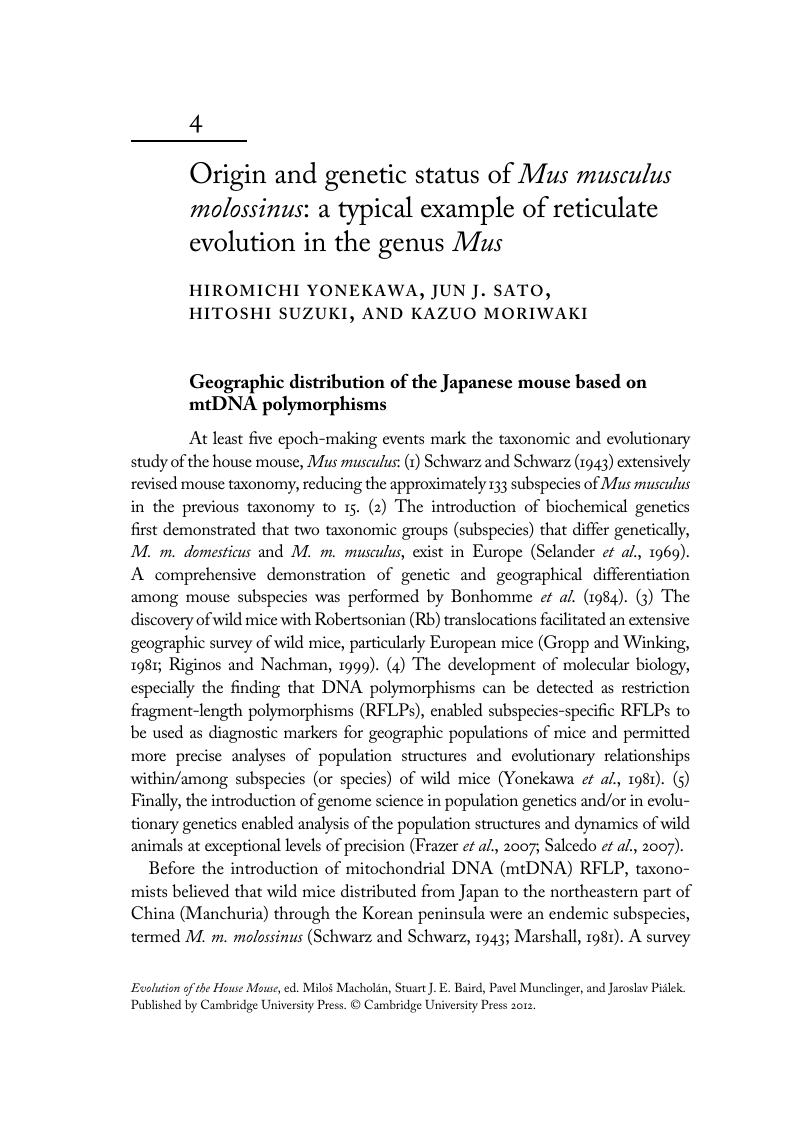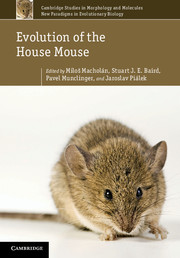Book contents
- Evolution of the House Mouse
- Series page
- Evolution of the House Mouse
- Copyright page
- Contents
- Contributors
- Preface
- Foreword:
- 1 The house mouse and its relatives:
- 2 Phylogeny and biogeography of the genus Mus in Eurasia
- 3 On the origin of the house mouse synanthropy and dispersal in the Near East and Europe:
- 4 Origin and genetic status of Mus musculus molossinus:
- 5 The complex social environment of female house mice (Mus domesticus)
- 6 Development of the mouse mandible:
- 7 Recognition of subspecies status mediated by androgen-binding protein (ABP) in the evolution of incipient reinforcement on the European house mouse hybrid zone
- 8 Mechanisms of chemical communication
- 9 The evolution of MHC diversity in house mice
- 10 Ultrasonic vocalizations in house mice:
- 11 House mouse phylogeography
- 12 The mouse t-haplotype:
- 13 Tracing recent adaptations in natural populations of the house mouse
- 14 What can the Mus musculus musculus/M. m. domesticus hybrid zone tell us about speciation?
- 15 Behaviour, ecology, and speciation in the house mouse
- 16 Chromosomal hybrid zones in the house mouse
- 17 The role of the X chromosome in house mouse speciation
- 18 New insights into parasitism in the house mouse hybrid zone
- 19 Hybrid male sterility genes in the mouse subspecific crosses
- 20 Linkage disequilibrium approaches for detecting hybrid zone movement:
- Index
4 - Origin and genetic status of Mus musculus molossinus:
a typical example of reticulate evolution in the genus Mus
Published online by Cambridge University Press: 05 August 2012
- Evolution of the House Mouse
- Series page
- Evolution of the House Mouse
- Copyright page
- Contents
- Contributors
- Preface
- Foreword:
- 1 The house mouse and its relatives:
- 2 Phylogeny and biogeography of the genus Mus in Eurasia
- 3 On the origin of the house mouse synanthropy and dispersal in the Near East and Europe:
- 4 Origin and genetic status of Mus musculus molossinus:
- 5 The complex social environment of female house mice (Mus domesticus)
- 6 Development of the mouse mandible:
- 7 Recognition of subspecies status mediated by androgen-binding protein (ABP) in the evolution of incipient reinforcement on the European house mouse hybrid zone
- 8 Mechanisms of chemical communication
- 9 The evolution of MHC diversity in house mice
- 10 Ultrasonic vocalizations in house mice:
- 11 House mouse phylogeography
- 12 The mouse t-haplotype:
- 13 Tracing recent adaptations in natural populations of the house mouse
- 14 What can the Mus musculus musculus/M. m. domesticus hybrid zone tell us about speciation?
- 15 Behaviour, ecology, and speciation in the house mouse
- 16 Chromosomal hybrid zones in the house mouse
- 17 The role of the X chromosome in house mouse speciation
- 18 New insights into parasitism in the house mouse hybrid zone
- 19 Hybrid male sterility genes in the mouse subspecific crosses
- 20 Linkage disequilibrium approaches for detecting hybrid zone movement:
- Index
Summary

- Type
- Chapter
- Information
- Evolution of the House Mouse , pp. 94 - 113Publisher: Cambridge University PressPrint publication year: 2012
- 5
- Cited by

